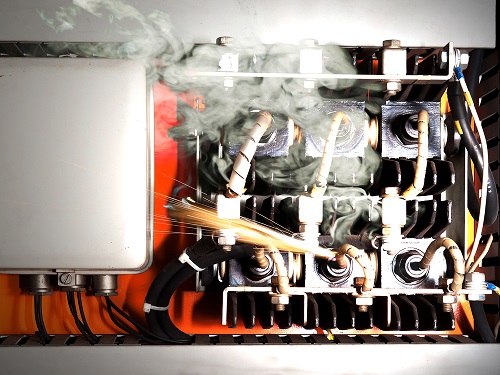
Have you ever had your appliance or lights suddenly shut off after switching on a vacuum, cranked up a space heater, or plugged a lot of holiday lights? If so, that’s what you call an electrical circuit overload. The circuit breaker that’s located in the service panel of your home is the one that triggered the shutdown. And even though circuit breakers work well in preventing house fires because of overloads, the safest thing you have to do is manage your electricity usage so you can prevent overloads.
What is an electrical circuit overload?
Electrical circuits are made to handle a limited amount of electricity. An overload takes place whenever you draw more electricity than what a circuit can handle safely. Circuits are comprised of wiring, breaker, and devices such as appliances and light fixtures. The electricity usage of every device that is running adds to the overall load on the circuit. Going over the rated load for the circuit wiring can cause a tripped circuit breaker, turning the power to the whole circuit off. Ask your electrician for more information on electrical overloads and how to prevent them.
In case there is no breaker in the circuit, an overload can lead to overheating in the circuit wiring, which could melt the wire insulation and cause a house fire. Different circuits have various load ratings so that a few circuits can offer more electricity than others. Home electrical systems are made around regular household use, however, there is nothing to stop us from plugging in a lot of devices on the exact same circuits. But, knowing more about the layout of the circuits in your home can help you prevent overloads. It is also advised to seek the expertise of Florence Electrician Pros for any issues you might have regarding the matter.
Signs of Overload Circuits
The most noticeable indication of an electrical circuit overload is a tripped breaker and shutting down all the power. Other less obvious signs are:
· Dimming lights especially when you switch on more lights or appliances
· Buzzing switches or outlets
· Switch covers or outlets that are warm to touch
· Burning odors from switches or outlets
· Scorched outlets or plugs
· Appliances, power tools, or electronics that appear to have insufficient power
Burning smells, buzzing sounds, as well as unusually warm devices can also be a sign of other wiring issues like a short circuit or loose connections. In case any of these issues continue after you have taken precautionary measures to prevent circuit overloads, get in touch with a professional electrician Florence SC right away.
Solutions For Overloaded Circuits
The ideal target is not the maximum load on every unit. It is better if the normal load on a circuit does not go over 80% of the maximum load. For a circuit that has 15 amp, the safest load target is 1,440 watts while a 20 amp circuit has a safe load of 1,920 watts.
In case your circuit calculations show that you are drawing more wattage from a certain circuit than the preferred load number, or if you are going over the rated load as well as regularly overloads the circuit, there are a few things you can do to lower the load on the circuit to prevent overloading:
· Plug in your appliances on a circuit that is less used. You can identify the circuits will lots of available wattage by using your mapping as well as the circuit calculations
· Don’t turn on too many things at the same time
· Decrease the lighting loads by changing halogen or incandescent light bulbs with LED lights or CFL bulbs
· Install new circuits that can handle high demand devices
Call Florence Electrician Pros if you need help dealing with electrical circuit overloads. You may reach us at <a href="tel: 843-212-4173"> (843) 212-4173</a>.
Florence Electrician Pros
Florence, SC 29501
843-212-4173
https://electricianprosflorence.com/

No comments:
Post a Comment